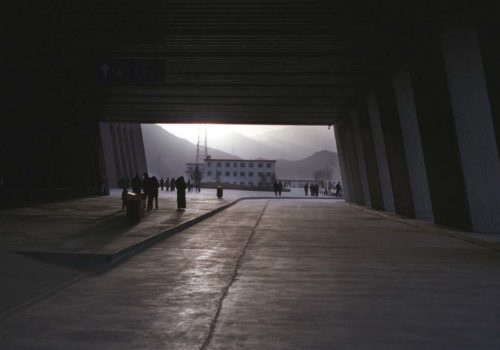The traditional farming, nomadic and monastic society that Tibet was and to some extend still is, rapidly changing.
New infrastructure, railways, roads and airports are being built, bringing an influx of people and economic activity, speeding up urbanization and increasing activities around mining and hydro electric dams to fulfill increased demand for raw materials and power.
This together with the climate change and the increased government regulations changes the life of the nomads and farmers rapidly, forcing people to change their old ways and in many instances to resettle into newly build villages with neatly lined up small concrete houses where there is little to do. The pure nomadic life-style is in many areas disappearing rapidly and the agriculture is up scaled from traditional subsistence farming. Some traditions will be lost forever but the Tibetan culture is also surprisingly resilient and the Tibetans find many ways to adjust to the new situations and to mix the traditional with the new.
With money flowing in, new residential areas sprawl and cities and monasteries are renewed. The cities do not only grow because the Tibetans move there but also because of the influx of Han Chinese who bring with them even more economic and industrial activities. Like many of the larger towns in the Tibetan areas, Lhasa expands many kilometers each year, looking more and more like any large fast-growing Chinese city.
The Tibetans themselves continue to dedicate a large part of their time and income to their religion. In the past decade many large monasteries and Buddhist temples have been constructed and renewed in (mainly) Eastern Tibet and monastic settlements with thousands of followers flourish. These also attract a significant percentage of Han Chinese followers who help funding these often to the dislike of the official authorities.
How the old and the new mix, clash and sometimes just live in parallel worlds is fascinating to witness. As with all rapid changes there are people that stay behind whose existence is marginalized, traditions that are lost and this is sad to see. But on the other hand many Tibetans, although they might resent many of the rules imposed by the authorities, also embrace the progress and are happy to improve their living standards.
This project focuses on the changes that took place in Tibet in the last decade. With these photos (taken between 2004 and 2012) and the book ‘Freeing the Fish’ Marieke would like to provide a broader view on Tibet, not only the (disappearing) traditional Tibet but also what it is developing into. Which is very vibrant and, to her, more interesting then the pure traditional Tibet.
Marieke Ten Wolde is a freelance documentary and portrait photographer based in the Hague, the Netherlands. She graduated in 2007 from the Foto Academie in Amsterdam and in 2011 / 2012 she was a participant in the Noorderlicht Masterclass.
In 2007 she published a book on the life in Polish apartment buildings and worked on several documentary projects.
The project shown here features the accelerating change in Tibet and the effect on the Tibetan environment and society. Which resulted in the book Freeing the Fish, Progress and Impermanence in modern-day Tibet’ that will be published in May.
















